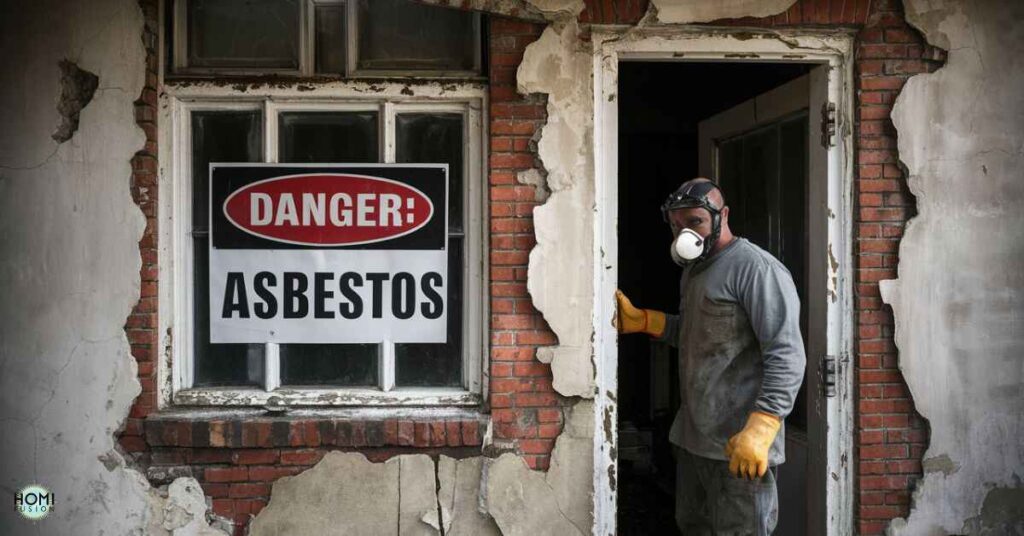When selling a house, disclosing asbestos is crucial for legal and ethical reasons. Failure to disclose can lead to complications and legal liabilities. This introduction explores the necessity of asbestos disclosure in real estate transactions.
What is Asbestos?
In the context of selling a house, asbestos refers to a mineral fiber that was once commonly used in construction materials due to its heat resistance and durability. However, asbestos is now recognized as a significant health hazard, as its microscopic fibers can become airborne and pose serious risks when inhaled.
Why Asbestos is Harmful
When it comes to selling a house, asbestos can be harmful due to legal, health, and financial considerations:
Legal Requirements: In many jurisdictions, there are strict regulations regarding asbestos disclosure when selling a property. Failure to disclose known asbestos can result in legal repercussions, including lawsuits and fines.
Health Risks: Asbestos exposure poses serious health risks to occupants. If asbestos-containing materials are present in the home and not disclosed, buyers may unknowingly expose themselves and their families to these hazards.
Financial Impact: Non-disclosure of asbestos can lead to financial repercussions. Buyers may negotiate lower prices or demand costly asbestos remediation if they discover asbestos after purchasing the property. Additionally, insurance companies may raise premiums or deny coverage for properties with undisclosed asbestos.
Remediation: In some cases, sellers may need to address asbestos issues before listing their property. Remediation may involve hiring licensed asbestos abatement professionals to safely remove or encapsulate asbestos-containing materials.
Ethical Considerations: Transparent disclosure of asbestos reflects ethical responsibility and builds trust between sellers and buyers. Failing to disclose such a significant health and safety concern can damage the reputation of the seller and lead to disputes during and after the sale process.
Where is Asbestos Commonly Found in the Home?
Asbestos was extensively used in various building materials before its health hazards were fully understood. In homes built before the 1980s, asbestos-containing materials (ACMs) can be found in several areas:
Insulation: Asbestos was commonly used in insulation materials, including attic insulation, pipe insulation and wall insulation. Vermiculite insulation, often found in attics, can also contain asbestos.
Roofing Materials: Some older roofing materials, such as shingles, felt, and flashing, may contain asbestos fibers.
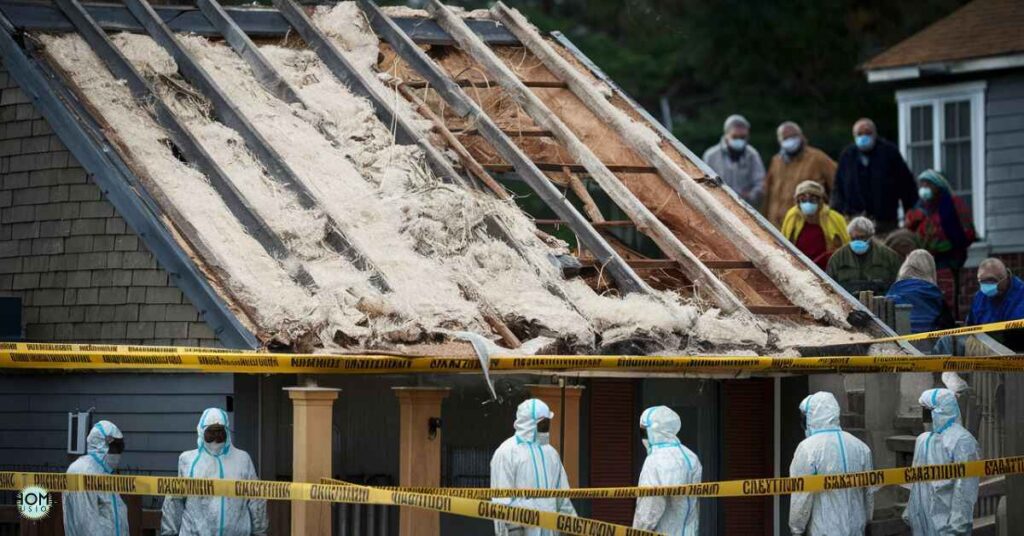
Flooring: Vinyl floor tiles and the adhesive used to install them in older homes may contain asbestos. Additionally, asbestos may be present in linoleum flooring and the backing materials of vinyl sheet flooring.
Ceiling Tiles and Textured Paints: Asbestos was used in acoustic ceiling tiles, popcorn or textured ceiling finishes and textured paints applied to walls and ceilings.
Pipes and Ducts: Asbestos-containing materials were commonly used to insulate pipes, ducts and HVAC systems. These materials may still be present in older homes.
Cement Products: Asbestos was used in cement-based products like siding, roofing panels, and cement pipes commonly found in older homes.
Fireplaces and Wood Stoves: Asbestos-containing materials may be present in fireproof materials around fireplaces, wood stoves and heat shields.
Appliances: Older appliances, such as ovens, stoves, and hot water heaters, may have components containing asbestos, such as insulation or gaskets.
How Can I Tell If There is Asbestos in the House?
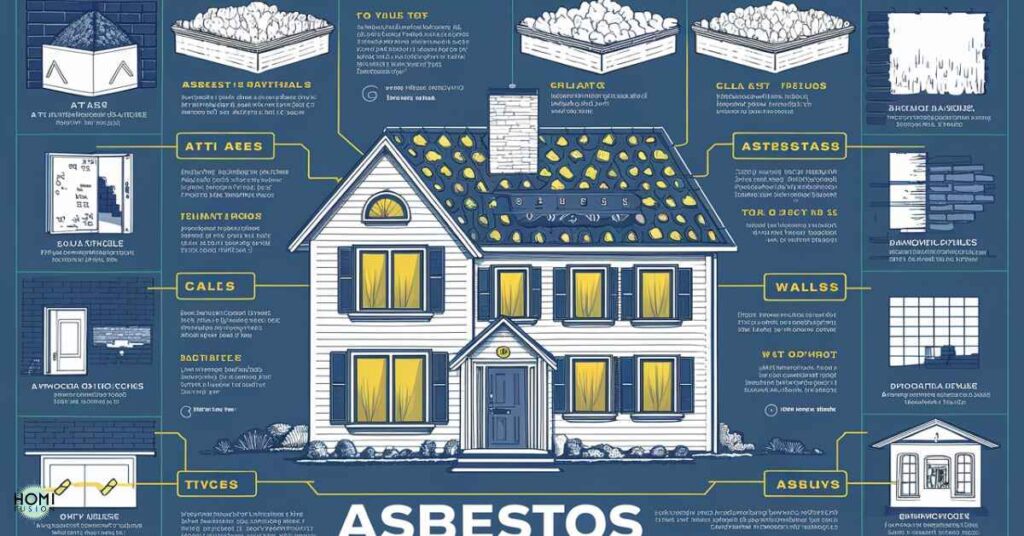
Determining if asbestos is present in a house requires professional assessment due to the microscopic nature of asbestos fibers. However, there are several indicators and steps you can take:
Age of the House: Homes built before the 1980s are more likely to contain asbestos-containing materials (ACMs), as asbestos was commonly used in construction materials before its health risks were widely known.
Asbestos-Related Materials: Identify potential ACMs such as insulation, vinyl floor tiles, textured ceiling finishes, roofing materials, pipe insulation, and cement products. These materials were often manufactured with asbestos before regulations restricted its use.
Professional Inspection: Hire a licensed asbestos inspector or abatement professional to conduct a thorough inspection. They will collect samples from suspected materials and send them to a certified laboratory for analysis. Do not attempt to take samples yourself, as this can release asbestos fibers into the air.
Asbestos Testing: Laboratory analysis is the only definitive way to confirm asbestos presence. Certified laboratories use microscopy techniques to identify asbestos fibers in samples.
Records and Documentation: Review renovation or construction records if available. Contractors may have documented the use of asbestos-containing materials during past work on the property.
Visual Inspection: While not conclusive, visual signs such as old insulation with a powdery appearance, damaged or deteriorating insulation, or crumbling textured ceiling materials may indicate potential asbestos-containing materials.
Asbestos Awareness Training: If you are a homeowner or involved in property management, consider attending asbestos awareness training to learn about common ACMs and safety precautions.
Do You Need to Remove Asbestos?
The decision to remove asbestos depends on various factors, including its condition, location and potential for disturbance. Here are key considerations regarding the need for asbestos removal:
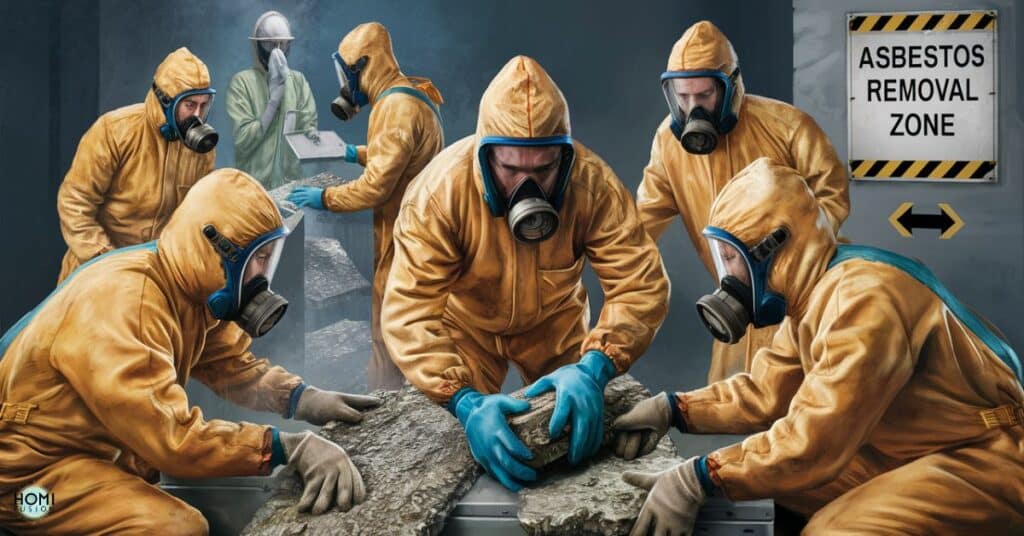
Condition of Asbestos-Containing Materials (ACMs): If ACMs are in good condition, undamaged and not likely to be disturbed, removal may not be necessary. Encapsulation or management strategies can be effective in containing asbestos fibers and reducing risks.
Risk of Disturbance: Asbestos is most hazardous when its fibers become airborne and are inhaled. If ACMs are at risk of disturbance due to renovation, demolition, deterioration or other activities, professional removal is often recommended to prevent exposure.
Occupant Safety: Prioritize occupant safety when assessing the need for asbestos removal. Consider factors such as the location of ACMs in areas accessible to occupants, potential for accidental damage and the presence of vulnerable individuals, such as children or elderly residents.
Regulatory Requirements: Many jurisdictions have regulations governing asbestos handling, removal and disposal. Compliance with these regulations is mandatory and typically requires licensed asbestos abatement contractors for removal projects. Failure to comply can result in legal consequences.
Professional Assessment: Conduct a professional asbestos inspection to assess the condition, type, and extent of ACMs in the property. Licensed inspectors can provide recommendations based on their findings, including whether removal is necessary or if management strategies are sufficient.
Cost and Feasibility: Consider the cost and feasibility of asbestos removal versus other management options. Removal can be a significant undertaking, requiring specialized equipment, trained personnel and proper disposal procedures. Evaluate the long-term benefits and risks associated with different approaches.
Read this blog: Why Is It Humidity In My House?
Asbestos Removal Regulation
Asbestos removal regulations are stringent to protect health and the environment. In Ontario, Regulation 278/05 under the Occupational Health and Safety Act governs asbestos removal. Here are key aspects of asbestos removal regulations:
Licensing and Certification: In many jurisdictions, asbestos removal contractors must be licensed and certified to handle asbestos-containing materials (ACMs). This includes training on safe removal practices, use of protective equipment, and proper disposal procedures.
Notification and Permits: Before commencing asbestos removal projects, contractors typically need to notify regulatory authorities and obtain permits. This ensures that removal activities are conducted according to established guidelines and safety protocols.
Workplace Safety Standards: Asbestos removal must adhere to strict workplace safety standards to protect workers from exposure. This includes measures such as controlled removal areas, use of personal protective equipment (PPE), and air monitoring during and after removal activities.
Containment and Encapsulation: During removal, ACMs are often contained to prevent asbestos fibers from spreading to unaffected areas. Containment may involve sealing off work areas with barriers, using negative air pressure systems and wet methods to minimize fiber release.
Disposal Regulations: Asbestos waste must be properly packaged, labeled, and disposed of according to regulations. This typically involves transporting asbestos waste to approved disposal facilities equipped to handle hazardous materials safely.
Air Quality Monitoring: Air monitoring is conducted before, during and after asbestos removal to ensure that airborne asbestos levels remain within safe limits. Continuous monitoring helps detect any potential breaches in containment or unexpected fiber release.
Documentation and Reporting: Detailed documentation is required for asbestos removal projects, including work plans, risk assessments, air monitoring results, waste disposal records, and
Public Notification: In some cases, public notification may be required before asbestos removal projects, especially if they involve large-scale or high-risk activities.
What do I do if I have asbestos?
Here are some activities to do if found asbestos:
Repair it
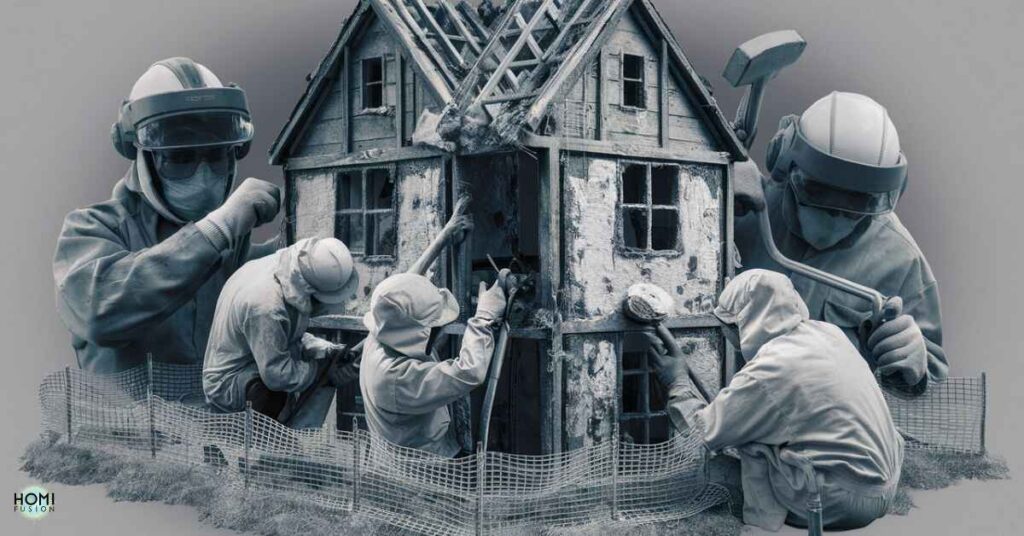
If asbestos-containing materials (ACMs) are in good condition but showing signs of wear or damage, consider repair options. This involves sealing or encapsulating ACMs to prevent fiber release. Professional contractors can perform repairs using specialized materials and techniques approved for asbestos management.
Remove it
When ACMs are damaged, deteriorating or pose a risk of fiber release, removal may be necessary. Hire licensed asbestos abatement professionals to safely remove and dispose of ACMs according to regulations. Proper containment, removal, and disposal procedures are crucial to minimize exposure risks.
Do nothing
In some cases, leaving ACMs undisturbed and managing them in place may be a viable option, especially if they are in good condition and not likely to be disturbed. Implementing management strategies such as regular inspections, monitoring, and maintenance can help contain asbestos hazards without immediate removal.
Sell for cash
Some companies specialize in buying properties with asbestos issues, offering cash deals to homeowners. While selling for cash may provide a quick solution, it’s essential to consider the ethical and legal implications. Ensure transparency and compliance with asbestos disclosure requirements to avoid future liabilities.
Last-Minute Fixes If Your Home Has Asbestos
If you discover asbestos in your home just before selling, consider these last-minute options:
Encapsulation: Seal or encapsulate asbestos-containing materials (ACMs) to prevent fiber release. Use specialized products and techniques approved for asbestos management.
Professional Consultation: Seek advice from licensed asbestos professionals for quick, safe, and compliant solutions. They can assess the situation and recommend appropriate actions.
Disclosure: Even with last-minute fixes, disclose asbestos presence to potential buyers. Transparency is crucial to avoid legal issues and build trust.
Do You Have to Disclose Asbestos When Selling Your Home?
Yes, you must disclose known asbestos presence when selling your home. Failing to disclose can lead to legal consequences, as buyers have the right to know about potential hazards. Consult legal professionals for accurate and compliant disclosure.
Asbestos Disclosure Requirements (Ontario)
In Ontario, Canada, asbestos disclosure is mandatory when selling a property. Sellers must provide a written disclosure statement, including information about known asbestos-containing materials (ACMs) in the property. Non-disclosure can result in legal liabilities.
Buyer Obligations for Latent Defects

Buyers have obligations to investigate and address latent defects, including asbestos, before purchasing a property. Conduct thorough inspections, hire professionals for assessments, and consider potential risks associated with ACMs. Legal advice and due diligence are essential.
Also read: What Is A Garden Home?
Why You Need a Real Estate Lawyer
A real estate lawyer is crucial for navigating complex legal aspects of property transactions, including asbestos disclosure. They ensure compliance with regulations, review contracts, protect your interests and provide legal guidance throughout the buying or selling process. Consult a reputable real estate lawyer for expert assistance.
Frequently asked questions
Do you have to declare asbestos when selling in the UK?
In the UK, sellers are legally required to disclose asbestos-related information during property sales, ensuring transparency and safety for buyers.
Do you have to disclose asbestos when selling a house in Australia?
Yes, in Australia, sellers must disclose asbestos presence or knowledge to potential buyers as part of property sale disclosures.
Do you have to disclose asbestos when selling a house in NY?
In New York (NY), sellers are obligated to disclose asbestos presence or known hazards to buyers during real estate transactions.
Do you have to disclose asbestos when selling a house in Florida?
Similarly, sellers in Florida must disclose asbestos information to buyers when selling a house, adhering to state regulations for property sales.
Conclusion
Managing asbestos in real estate transactions requires a comprehensive approach that prioritizes safety, compliance and transparency. Whether you’re a seller or a buyer, understanding asbestos risks, regulations and disclosure requirements is essential.
Professional assessments, proper documentation and legal guidance play key roles in navigating asbestos-related challenges. Transparency in disclosing asbestos presence builds trust and avoids potential legal liabilities. Buyers must conduct due diligence regarding asbestos and other latent defects, while sellers should prioritize safety measures and compliance with regulations.
Engaging with qualified professionals, such as asbestos inspectors, real estate lawyers and licensed contractors, ensures a smooth and legally compliant process. Ultimately, proactive management of asbestos contributes to safer homes and ethical real estate transactions.

